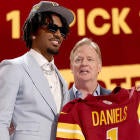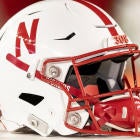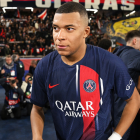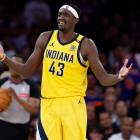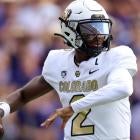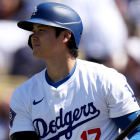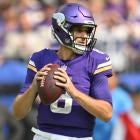 |
| Kentucky's Mikie Benton avoids suspension for this hit on Jordan Reed. (U.S. Presswire) |
As the Southeastern Conference is finding out, not all hits to the upper body are created equal.
CBS Sports reported earlier today that Kentucky safety Mikie Benton was expected to avoid suspension for a hit to the helmet of Florida tight end Jordan Reed in last week's 38-0 loss in The Swamp.
This afternoon, the SEC announced that Benton's 15-yard penalty for initiating contact to the head or neck area of a defenseless player with the helmet, forearm, elbow or shoulder does not merit further punishment.
Here's part of the SEC's explanation:
"In a required video review by the conference (NCAA Rule 9-6-2), it was determined the officials call on the field was correct, and this was a Targeting foul with contact above the shoulders and the penalty was properly enforced. Based on the fact that the major impact of the blow was initially to the shoulder area of the receiver, this act does not warrant additional actions from the conference office."
Yes, Benton knocked Reed's helmet off (with Reed somehow holding onto the ball for a 25-yard gain). But it didn't appear like a head-hunting job. He didn't lunge his entire body into Reed's helmet-neck area.
The SEC could face weekly tough decisions on questionable hits, and consistency will be key.
The league's operative phrase is "flagrant and dangerous," which forced Ole Miss safety Trae Elston and South Carolina safety D.J. Swearinger into one-game suepsnsions. The players missed critical games -- Elston a 66-31 loss to Texas and Swearinger a 31-10 win over Missouri -- for respective hits on UTEP and UAB receivers.
I think those hits were more questionable than the ones from Benton and Vanderbilt's Andre Hal, who knocked South Carolina tight end Justice Cunningham's helmet off and appeared to lead mostly with his shoulder.
Rule 9-1-4 of the NCAA rulebook states "no player shall target and initiate contact to the head or neck area of a defenseless opponent with the helmet, forearm, elbow or shoulder," while Rule 9-1-3 prohibits a player initiating contact "with the crown (top) of his helmet."
But here's the thing: All four of those hits would likely warrant NFL fines. Should conferences be as stringent? Or is a one-game suspension to a college player considered more severe than an NFL player losing $20,000?
Still hard to tell at this point.













